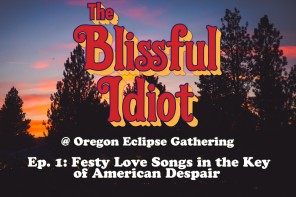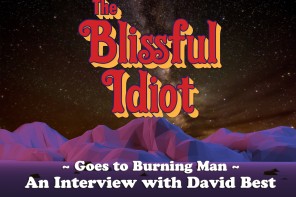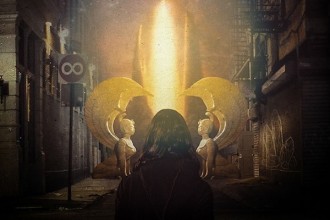I thought it might be interesting for today’s producers to read a few stories about some of the things we did back in the 1990’s to make sounds and effects, for which the ease of achieving by today’s standards is often taken for granted. My infatuation with hardware began as a pre-teen when I put a quarter into a Galaxian machine and a genetic mutation took place – I have never been the same.
A second turning point occurred while I was watching a college band perform in Ithaca, NY. The drummer hit a rubber pad with a stick, and Harry Dean Stanton’s voice from the 1984 cult classic Repo Man spoke to me: “Ordinary fuckin’ people, I hate ’em” and my aforementioned mutation began to flower in the shape of an AKAI S-950. Soon, all was to be lost… in sound of course.
A nail in the coffin of my desire to create with acoustic instruments was a mix tape by UK Hardcore DJ Nicky Blackmarket that I experienced circa 1991, as well as The Low End Theory from A Tribe Called Quest, Fear of a Black Planet from Public Enemy’s The Bomb Squad and obviously Paul’s Boutique by The Beastie Boys from The Dust Brothers. However the straw that broke the camel’s back was the production of DJ Premier and Pete Rock on the epic Nas debut Illmatic. At this moment in time, after 20 years as a percussionist, I sold my drum set in exchange for an AKAI MPC-3000. Resistance was futile.
Here are descriptions of two basic production techniques, including details on how I used to accomplish them in addition to the audio of my recorded work while implementing these techniques at the time.
1) Rendering a loop with effects
DJ Soul Slinger “Abducted” tube Paranormal Remix
[soundcloud params=”auto_play=false&show_comments=true&color=0ac4ff”]https://soundcloud.com/heissmusik/dj-soul-slinger-abducted-tube-paranormal-remix[/soundcloud]
These days if you want to modify and preserve the results of an effect on a timed segment of audio (for the purpose of example, we’ll say a beat – although it could be anything), all you have to do is change the plugins and re-render it repeatedly or maybe just apply a series of inserts on the channel and automate them, turning each one on and off as you please in nearly any combination. These possibilities have gotten so complex that you can even use a tool like Ableton’s Effects Rack with macro control, which I will not go into in this article.
When I started creating electronic music, there were no tools this powerful, but we did have MIDI with CC (Continuous Control) and there were expression pedals with sequencers to record their actions. If there was a click, drag, and play scenario to save the results of a modification, I was not using it. My first exposure to such power came later in the form of Sonic Foundry ACID and earlier versions of CuBase using a Digidesign AudioMedia 3 PCI Card.
We did have something called a DAT. Digital Audio Tape. Yes, T-A-P-E. I had a Panasonic SV-3700, and it had cost at least $1000. I had started to produce jungle music partly because my mind was blown by T-Power’s remix of DJ Soul Slinger’s epic “Abducted,” but mostly because someone told me I needed to use software to do it, and would never be able to make that style with just a hardware MPC-3000. The guy I used to be was easily baited by such folly, and so I set forth as one of the few (if not only) producers to do full on LIVE performances playing JUNGLE music with a HARDWARE based setup.
Why? I’m glad you asked. Because that is how I used to roll, and sometimes I still do but at least today I recognize it for the choice that it is. I am the guy who, when visited by a Mystic while sitting at the bottom of a mountain, would decline the keys to a Rolls Royce on a paved road to the top with Jiddu Krishnamurti riding shotgun in favor of a machete to manifest my own suffering (better perceived as Spiritual growth) by cutting a new trail of Ascension way off the beaten path. My experience with romantic relationship displays this tendency perfectly… but I digress.
So yes, everything was arranged and mixed LIVE ON THE FLY using an Allen & Heath GL2 mixing console, the result recorded and captured forever on 2-track DAT. The awesomeness of arbitrary controllerism that we take for granted today was once a never ending search for the right combination of machines (I plan to discuss the history of these choices in a future article entitled – Music Machines: Known, Loved, and Lost.)
Syncro-mystically, a term I borrow from Adam Scott Miller from whom I licensed the cover art of my latest release Awake(n) – I was eventually asked to remix DJ Soul Slinger’s epic work “Abducted,” the very track which T-Power’s remix of had completely blown my mind. I wanted to render my drum loops with effects so that they could be further manipulated inside my precious Akai MPC-3000. Here is what I actually did to achieve the results:
-
Playback the programmed beats from my MPC-3000 into a Mesa Boogie V-Twin Pre Amp
-
Record the output to DAT
-
Resample from the DAT and edit the start/end points on the MPC
This process is much more time consuming than how just clicking render is today. Eventually I found tiny hardware phrase samplers like the Zoom Sample Track ST-224, which auto sets the loop length based upon BPM. My friends from We (tm) (DJ Olive and Lloop) used to figure the proper loop length using a calculator based upon sample rate and BPM. A We (tm) performance was actually done without the use of a sequencer or MIDI Clock; two producers would duel using only timed loops and sounds triggered by MIDI keyboard. I highly suggest finding a copy of their album Decentertainment on Liquid Sky Music‘s Home Entertainment imprint, and listening to the track “Out For Now.” And if that doesn’t feed your head then try The Square Root of Negative One.
2) Automating Delay Time
“Let’s Get Mental” by tube
[soundcloud params=”auto_play=false&show_comments=true&color=0ac4ff”]http://soundcloud.com/heissmusik/lets-get-mental[/soundcloud]
OK. Brace yourself as I make a bold statement – there was a time when electronic music was actually more electronic than it is today, and used something called CV-Gate.
Control Voltage, the “CV” in CV-Gate is a technology where a certain pitch (frequency) of an oscillator directly corresponds to a specified amount of voltage (electricity). There are two schools:
-
Linear (one volt per octave) popularized by Bob Moog in the 1960’s, used by many synthesizers from manufacturers such as Roland, Moog, Sequential, Overheim, and ARP.
-
Exponential (hertz per volt) one octave = double the voltage used by synthesizers from manufacturers like Korg and Yamaha.
Source: http://en.wikipedia.org/wiki/CV/Gate
Gate is an electrical pulse which can trigger something. This is called a NOTE ON event in MIDI jargon today but CV-Gate does not have a NOTE OFF event therefore staged envelopes were used to shape a sound beginning with AR as well as ADSR, if a toggle enabled keyboard was involved. Gate has a couple of schools as well:
-
V-Trigger (positive) Roland
-
S-Trigger (negative) Moog Korg and Yamaha
To automate delay time: I programmed steady 16th notes using the “Timing Correct” button on my MPC. Then I sent that MIDI data to a CV-Gate converter which in turn sent a GATE signal on every 16th note to the Arp Sequencer’s “Gate In,” which would then advance by one step for each 16th note that passed. The Arp Sequencer voltage OUT was plugged into a delay unit’s voltage IN, and the audio signal of the beat was run directly through this delay unit while the result was recorded on DAT to be resampled.
Here is the equipment I used to do this for the track “Let’s Get Mental.” I have included an abstract definition describing the main purpose of each piece of equipment.
-
Novation Bass Station Rack (MIDI to CV Converter)
-
ARP Sequencer (Control Voltage Step Sequencer) receiving the GATE generated from each MIDI NOTE ON by the Bass Station
-
Digitech RDS 7.6 (Voltage Controlled Delay Time) receiving CV from the ARP Sequencer and translating it to delay time
-
SV-3700 DAT recording (please see Rendering a Loop with Effects above)
And thus it was so: the root movement by fourth in the breakbeat of “Let’s Get Mental” by tube was created by the sequenced delay time! With today’s tools this effect could be easily achieved by simply drawing with your mouse, and one could even have linear transitions between the pitches. Amazing.
These have been two examples confessions of how we (or at least I) did things back in the day. How useful it is to have more efficient tools like Ableton Live, though ironically efficiency may not always save time.
Watch for further contributions to Lost in Sound from @heissmusik!




